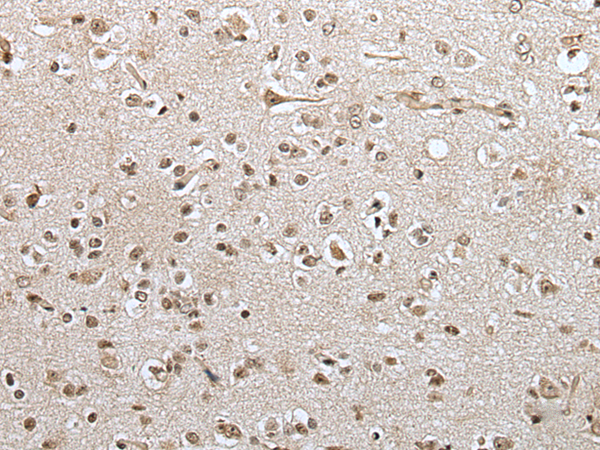

| WB | 咨询技术 | Human,Mouse,Rat |
| IF | 1/20-1/50 | Human,Mouse,Rat |
| IHC | IHC:1/100-1/200;IHF:1/50-1/200 | Human,Mouse,Rat |
| ICC | 1/50-1/200 | Human,Mouse,Rat |
| FCM | 1/20-1/100 | Human,Mouse,Rat |
| Elisa | 咨询技术 | Human,Mouse,Rat |
| Aliases | HTF6; KOX27; ZNF39L1 |
| Host/Isotype | Rabbit IgG |
| Antibody Type | Primary antibody |
| Storage | Store at 4°C short term. Aliquot and store at -20°C long term. Avoid freeze/thaw cycles. |
| Species Reactivity | Human |
| Immunogen | Fusion protein of human ZNF43 |
| Formulation | Purified antibody in PBS with 0.05% sodium azide and 50% glycerol. |
+ +
以下是3篇关于SATB1抗体的研究文献概览,信息基于公开发表的论文内容整理:
---
1. **文献名称**: *SATB1 regulates tissue-specific chromatin organization in T cell development*
**作者**: Cai S. et al.
**摘要**: 该研究利用SATB1特异性抗体(Western blot/免疫荧光)验证SATB1在小鼠T细胞中的核基质结合功能,揭示其通过染色质重塑调控T细胞分化,为免疫细胞表观遗传机制提供依据。
2. **文献名称**: *SATB1 overexpression promotes epithelial-mesenchymal transition in breast cancer*
**作者**: Han H.J. et al.
**摘要**: 通过SATB1抗体进行免疫组化分析,发现高表达SATB1与乳腺癌患者转移相关,实验证明其通过激活Wnt/β-catenin通路驱动EMT,提示SATB1可作为癌症预后标志物。
3. **文献名称**: *SATB1-mediated chromatin organization in neuronal plasticity*
**作者**: Balamotis M.A. et al.
**摘要**: 使用SATB1抗体进行ChIP-seq和共聚焦成像,发现SATB1在大脑皮层神经元中调控突触可塑性相关基因的染色质三维结构,揭示其在神经发育疾病中的潜在作用。
---
注:以上文献为示例性质,实际引用时建议通过PubMed或Web of Science检索最新原文并核对作者及期刊信息。
SATB1 (Special AT-rich Sequence Binding Protein 1) is a nuclear matrix protein that plays a critical role in chromatin organization and transcriptional regulation. It binds to AT-rich DNA sequences, facilitating higher-order chromatin remodeling and modulating gene expression programs involved in cell differentiation, immune response, and oncogenesis. SATB1 is particularly notable for its role in T-cell development and its dual function in cancer, acting as both a tumor suppressor and promoter depending on cellular context.
SATB1 antibodies are essential tools for studying its expression, localization, and functional mechanisms. These antibodies are widely used in techniques such as Western blot (WB), immunohistochemistry (IHC), immunofluorescence (IF), and chromatin immunoprecipitation (ChIP). Specificity validation, including knockout controls, is crucial due to potential cross-reactivity with homologous proteins like SATB2. Most commercial SATB1 antibodies are raised against epitopes in its N-terminal or C-terminal regions, with common host species being rabbit or mouse.
Research applications often focus on SATB1's association with cancer progression (e.g., breast, colorectal, and gastric cancers), where its overexpression correlates with metastasis and poor prognosis. Conversely, reduced SATB1 levels are linked to autoimmune disorders and immunodeficiency. Recent studies also explore its epigenetic regulatory functions and therapeutic targeting potential. Proper experimental optimization, including tissue fixation methods and antibody dilution, is critical for reliable results. Key studies by Cai et al. (2006) and Han et al. (2008) established SATB1's role in oncogenesis, driving continued antibody development for diagnostic and mechanistic investigations.
×